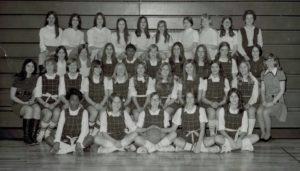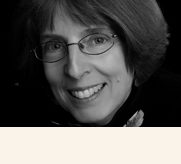I’m a girl who struggles to write girl characters, so what’s the deal, huh? I’ve asked this question for a long time, sometimes touching on it in other blog posts. This month I’m hitting it head-on.
When I was growing up, no one talked about gender identity, or if they did, I didn’t tune in. But I remember wishing I’d been born a boy. I remember wanting the freedoms that boys seemed to have. Now looking back, I think my wishes stemmed from not liking the expectations society put on girls. Wear dresses. Learn to use make-up. Enjoy cooking and shopping. Bleh. I tried but couldn’t bring myself to care about that stuff. (Still don’t.)
 By 6th grade I was taller than all the boys except three. In 7th grade I tried out for cheerleading and didn’t make it. Chorus and didn’t make it. Basketball and made second string. Or third. Somehow I ended up as team manager, which meant that before each game I’d cut up oranges and put them in clear plastic bags. During half time when the coach was doing a pep talk, I’d give out slices, and after the players had sucked on them, I’d collect the spit-filled rinds. (Sports drinks might’ve been invented by then, but they weren’t a thing.) Back then, I could run fast, but was lousy at basketball.
By 6th grade I was taller than all the boys except three. In 7th grade I tried out for cheerleading and didn’t make it. Chorus and didn’t make it. Basketball and made second string. Or third. Somehow I ended up as team manager, which meant that before each game I’d cut up oranges and put them in clear plastic bags. During half time when the coach was doing a pep talk, I’d give out slices, and after the players had sucked on them, I’d collect the spit-filled rinds. (Sports drinks might’ve been invented by then, but they weren’t a thing.) Back then, I could run fast, but was lousy at basketball.
The school dress code was skirts, which I hated. When it changed and I was finally allowed to wear pants—dress pants or a pants suit, but hey, at least it was pants—some of my self-consciousness started to melt away. I didn’t have to make sure my knees were always together, like in that b-ball team picture. (Can you find me?)
Back then, girls weren’t supposed to be good at math. But I remember mid-year getting moved from one math class to another, and it turned out that the new class was a few chapters ahead of the old. The teacher told me to get up to speed on my own and come see him if I had questions, and I don’t remember how I caught up, but I did. From then on I latched onto math because, well, clearly, I could do it, unlike basketball and chorus and whatever else I’d tried. But career choices seemed limited. Forget accountant or actuary or astronaut or engineer or financial expert, which my brother (also quick at math) was encouraged to consider. Along the way, the message I got—I’m not sure exactly where it came from, but I got it—was that girls who were good at math should teach school (boys would handle the other jobs).
 Having a girl’s body meant a thousand mixed-messages. I was built like a girl but approached the world “like a boy,” meaning I was competitive (a positive trait in a boy, but I was called pushy), a leader (bossy), and smart (“you’ll never get a date if you let them know you’re smarter than they are”). I absorbed so many stereotypes about what girls were supposed to be (wives and mothers) and do (smile and act ladylike) that years later, as I’ve tried to write girl characters, I’ve written stereotypes.
Having a girl’s body meant a thousand mixed-messages. I was built like a girl but approached the world “like a boy,” meaning I was competitive (a positive trait in a boy, but I was called pushy), a leader (bossy), and smart (“you’ll never get a date if you let them know you’re smarter than they are”). I absorbed so many stereotypes about what girls were supposed to be (wives and mothers) and do (smile and act ladylike) that years later, as I’ve tried to write girl characters, I’ve written stereotypes.
When I attempt to go inside the heart of a girl and imagine what she feels or wants, I can’t do it. She isn’t real. Instead of a person, for me a girl is an idea—an image that someone else thinks is the ideal, like a Stepford Wife. I haven’t liked most of my girl characters. And for many years, I didn’t like myself.
On the other hand, when I go inside the heart of a boy character, I feel free. He can do anything and be anyone. Inside him, I’m at home. I feel relaxed. Alive. Not contrived. As I write scenes, my boy characters speak or act in authentic ways, not how they should act because they’re boys, but ways that seem real just because they’re people—they’re kids at particular ages in particular places, dealing with whatever is going on around them. The story begins to come to life instead of falling flat.
This month as I’ve pushed myself to write on this topic, I’ve felt good about my decision to publish as A.B. instead of Anne. I’ve started to understand how and why I came to dislike myself, and how and why it’s taken me decades to heal from self-condemnation. I still have a ways to go. And I have many more characters to write.
When it comes to crafting fiction, each of us has different challenges, and I’d enjoy hearing what others are struggling with. (And where am I in that basketball team photo? Second row, second from left.)

Your experience resonated with me! I’ve shared many of the same experiences, including the basketball manager position. And when I first started writing, most of my characters were boys for the same reason. It was only with ROGUE and Kiara, my semi-autobiographical character, that I was first able to write a three-dimensional girl protagonist. Writing Kiara gave me the confidence to tackle other kinds of female characters besides ones based on myself. I’m quite happy with the strong female protagonist of my YA historical novel set in Portugal, Rosália, who is very different from me. And even though the manuscript doesn’t yet have a home, that has more to do with factors related to the publishing industry than with the book itself, so I know Rosália as a character has worked for other readers as well. It did take me a lot of thought and revision (not to mention research, because it is a historical novel) to get to that point, however.
Hahaha. Oh, Lyn, I love that you were a team manager, too! And kudos to you for crafting Kiara. A number of friends have encouraged me to write the girl I was growing up, the one struggling with all the mixed messages, but when I’ve tried, I’ve hit a wall. I dislike this person, my younger self, so thoroughly, so completely, that I can’t make her sympathetic. Readers won’t like her. For me, creating a sympathetic protagonist is a huge challenge. It’s one of the reasons I don’t yet have another novel out in the world. My work-in-progress has a boy protagonist, and after spending a few years with him, I’ve found his heart. Finally. But if he were a she, I think I’d still be searching.
I can also relate. I grew up with brothers and was pretty much a tomboy growing up. I played baseball, though my mother didn’t like that. I was not much for skirts either. It’s only as I learned to appreciate the girl that I was (as you mentioned in your post) that I’ve been able to write some female characters that I really love. But I struggled with birthing them.
I’m glad you used the word “birthing” because the image brought to mind the years when I was pregnant. I liked going through pregnancy and childbirth, and the experience helped me connect with women and enjoy being a woman. But in my early years, all the way up through college–when it came to emotional well-being and a positive self-image, those were tough times. I pretty much denied the part of me that’s female, and it’s taken me decades to reclaim it.
Interesting about the pregnancy being the first time you appreciated being a woman. In my latest YA novel, currently in revisions, one of the three protagonists is a fierce 17-year-old girl who is pregnant and does something both heart-wrenching and dangerous to protect her unborn child.
I look forward to reading it, Lyn. Yes, pregnancy has a way of turning a woman into a mama bear!